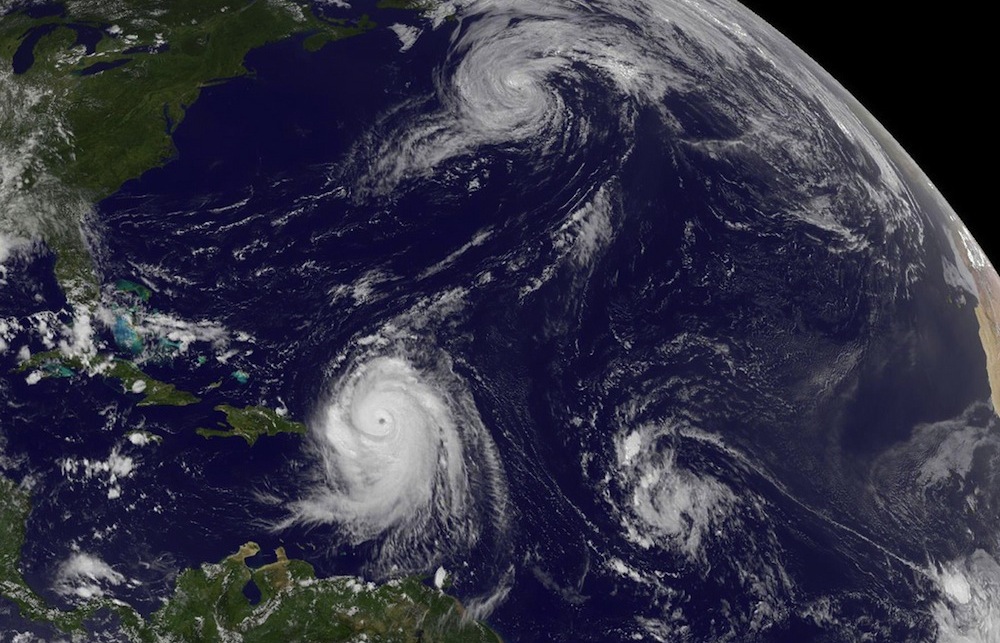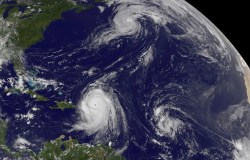Climate scientists have long predicted that cyclones and hurricanes would become more destructive as the climate changes, but that the number of such storms each year would decrease, or perhaps remain constant.
That notion was challenged Monday by Kerry Emanuel, an atmospheric scientist at the Massachusetts Institute of Technology, in a paper published in Proceedings of the National Academy of Sciences. Emanuel’s computer models foresee stronger cyclones and hurricanes, in line with previous research, but they also foresee a growing number of the storms each year as warming continues.
The Carbon Brief explained Emanuel’s research:
Six global scale climate models were used to produce a broad picture about what earth’s climate would be like under high levels of greenhouse gas emissions. From this, information about air and sea temperatures, wind patterns and atmospheric moisture, was used to simulate where and when tropical cyclones might occur in the future.
The results suggest that the number of tropical cyclones could exceed 100 per year by about 2070, compared to an average of 90 per year at the moment. Tropical cyclones could get more intense too, if the modelling is right.
The total amount of energy tropical cyclones release is expected to increase by 45 per cent over the course of the 21st century. Some of that energy would be spent by the extra 10 or so tropical cyclones per year, but half of it would be released by intense storms getting even stronger – meaning higher winds, taller storm surges and greater economic costs.
Perhaps unsurprisingly, Emanuel’s findings are being received with some skepticism by other atmospheric scientists, at least for the moment. From Climate Central:
James Elsner, an atmospheric scientist at Florida State University who was not involved in this study, downplayed the study’s conclusions given the considerable uncertainties involved with using computer models to simulate complex storms such as hurricanes.
“The results from the new Emanuel are provocative, but in my opinion there is little reason to put much weight on them when considering what might happen to tropical cyclone activity during the next 50 to 80 years,” he said in an email to Climate Central.
Emanuel points out that scientists are still learning what drives cyclonic frequency, which helps to explain the discrepancy between previous studies and this one. “The physics behind these numbers remains enigmatic, and the general relationship between tropical cyclone activity and climate is only beginning to be understood,” he wrote in the paper.
So will there be more cyclones and hurricanes as the climate changes, or not? We’ll be watching to see whether other climate scientists start reaching conclusions similar to Emanuel’s. If they do, we could be in for an even bumpier ride as the globe warms.



